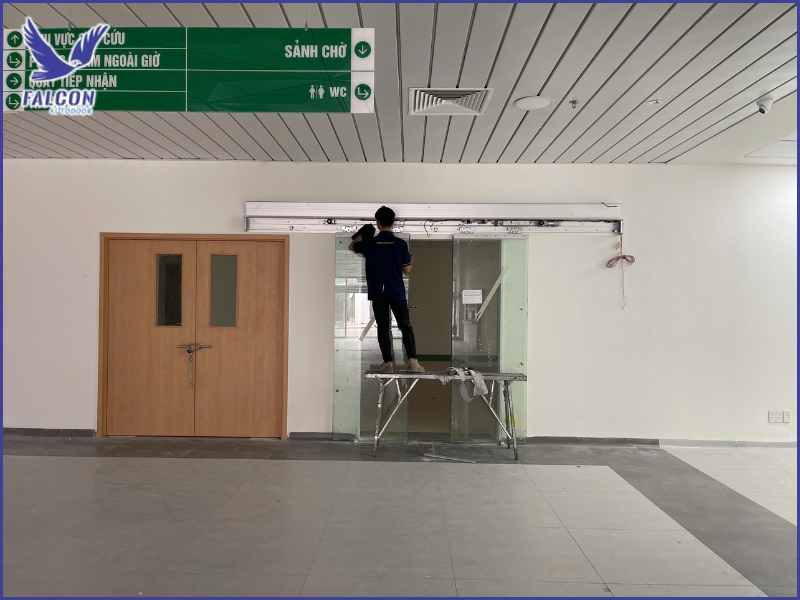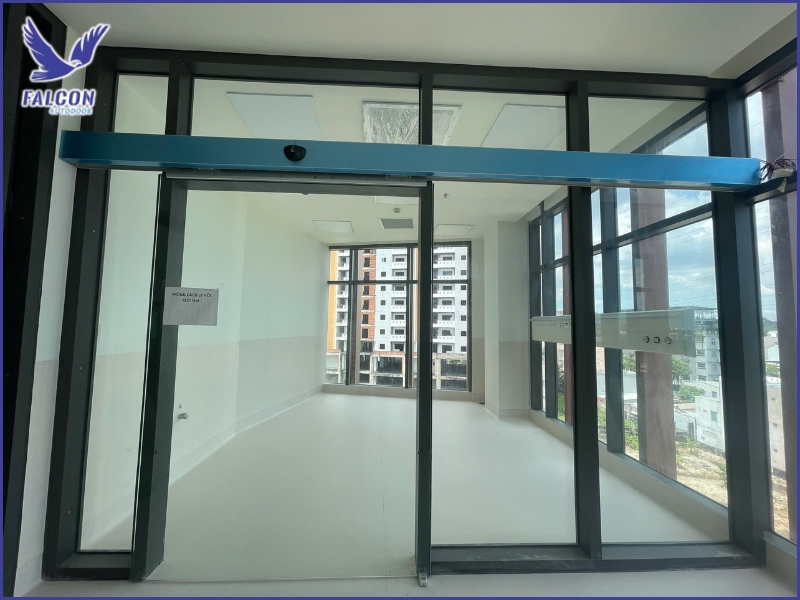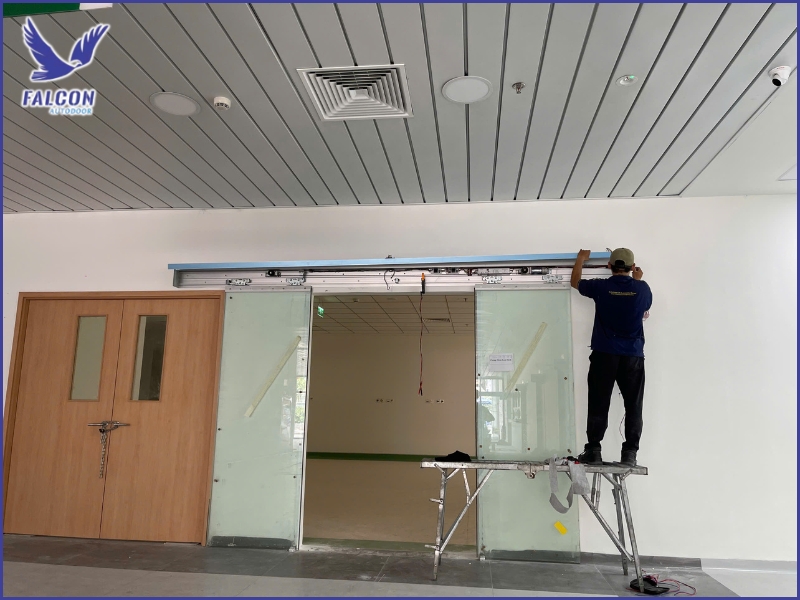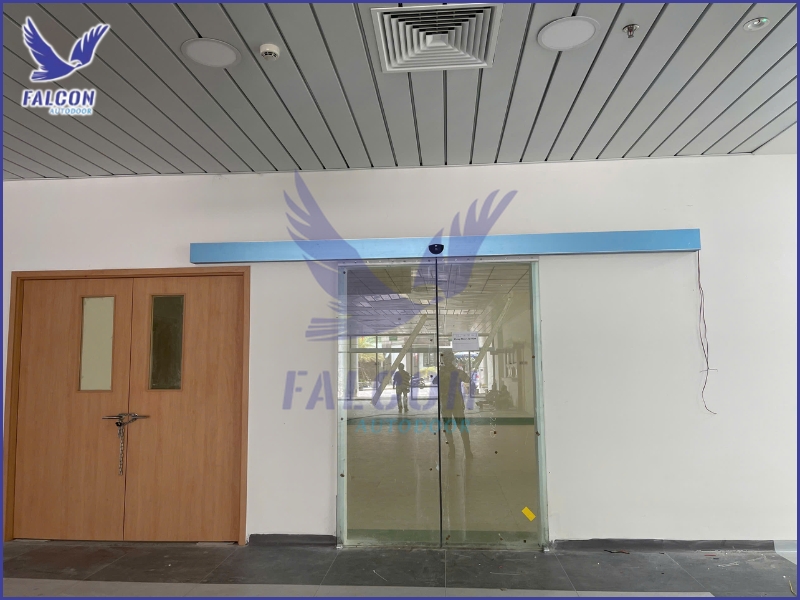Safety standards for operating automatic doors in public buildings
Automatic doors are now widely installed in public buildings, providing convenience and a modern image for every space. However, to guarantee safe and reliable operation, users must understand key safety standards. Thuy Linh Long outlines below the essential practices and technical criteria that ensure both user protection and long-term performance.
1. Why safety is critical when using automatic doors
In public buildings, automatic doors operate thousands of times per day, accommodating heavy traffic. Because of this continuous use, strict safety compliance is necessary to prevent accidents and extend the system’s service life.
1.1 High usage frequency, higher risks
Public entrances experience near-constant activity, making automatic doors work around the clock. Any misuse or lack of maintenance may cause jamming, sensor failure, or unexpected movements. Following proper procedures reduces hazards and keeps the entrance smooth and secure.
1.2 Direct impact on user experience
When automatic doors open and close smoothly, they create a professional and comfortable impression for everyone entering. If the door closes abruptly or reacts too slowly, it disrupts traffic flow and damages the facility’s image. Stable operation ensures user confidence and convenience.
1.3 Stability ensures long-term savings
Safety standards prevent component stress and extend the lifespan of motors, sensors, and control boards. Stable operation reduces sudden breakdowns and energy waste. Over time, this lowers repair costs and keeps performance consistent during peak hours.

2. Technical standards for installation and operation
To keep automatic doors safe in public environments, both installation and daily operation must follow international safety standards. Proper engineering guarantees durability, accurate detection, and complete protection for users in all conditions.
2.1 Design and installation standards
Automatic doors should meet European and global standards such as EN 16005, CE, and ISO 9001. The glass thickness, door weight, and speed must be calculated precisely to avoid motor overload. Professional installation ensures alignment, balance, and structural integrity.
2.2 Sensor and motion control standards
Sensors must have the correct detection range and avoid reflection or lighting interference. The control system should include anti-pinch, emergency stop, and automatic open functions during power loss to ensure safe evacuation. These features protect users from unexpected door movements.
2.3 Motor and operation speed standards
Motors must be appropriately sized for the door’s dimensions and weight. The recommended speed range is 0.4 to 0.8 m/s for a balance between safety and convenience. Deceleration at the end of travel helps prevent impact when the door closes.
2.4 Electrical and safety system standards
The electrical system must include grounding, circuit protection, and leakage prevention. Control panels should be installed in dry, secure locations to prevent tampering. Reliable electrical safety design reduces the risk of power-related failures and accidents.

3. Regular inspection and maintenance procedures
Routine inspection and maintenance are essential to ensure the system operates safely and efficiently. Early detection of faults helps prevent unexpected stoppages and guarantees the door’s readiness for daily use.
3.1 Checking sensors and motors
Technicians should test sensor sensitivity and motor output during maintenance. Weak or unresponsive components must be adjusted or replaced promptly. Proper calibration ensures stable door performance and quick response to user movement.
3.2 Evaluating speed and travel range
Door speed should meet the manufacturer’s specifications (typically between 0.4-0.8 m/s). The travel distance must stop precisely without hitting end points. Regular inspection prevents door misalignment and sudden shutdowns during operation.
3.3 Testing safety and emergency modes
Emergency stop, anti-pinch, and manual open functions must be tested regularly. These features ensure safety during power outages or sensor failures. Testing confirms that all systems respond correctly in emergencies.
3.4 Recording and documentation
After every inspection, records should be logged with the date, checked components, replacements, and results. Keeping maintenance history supports compliance with safety audits and helps predict future service needs.

4. Safe operation guidelines for staff and users
Besides installation and maintenance, proper human operation is vital for safety. Training staff and educating users minimize errors and protect both the door system and the people passing through.
4.1 Staff training and emergency handling
Personnel must be trained to operate the control panel, recognize warning signals, and handle emergencies. They should know how to respond when the door fails to move, loses power, or shows sensor errors. Quick action reduces downtime and safety risks.
4.2 Keeping the doorway clear
No obstacles such as trolleys, boxes, or signs should block the sensor zone. These items can interfere with detection or damage tracks. Keeping the area clear ensures accurate operation and prevents accidents.
4.3 Avoid forcing the door open or closed
Users should never hold or push the door while it is moving. Doing so increases strain on the motor and rollers. Allowing sensors to manage motion maintains system balance and extends component life.
4.4 Posting clear signage and warnings
Clear signs such as “Automatic Door - Please Do Not Touch” should be placed near entrances. Visible instructions remind users to keep safe distances. Good signage promotes awareness and prevents careless contact.

Replacing unsafe practices with strict adherence to these standards ensures automatic doors remain stable, efficient, and safe. For public buildings requiring international-grade automatic door systems, contact Thuy Linh Long for consultation, installation, and maintenance of authentic Falcon automatic doors that combine safety, durability, and performance.
THUY LINH LONG SERVICES TRADING COMPANY LIMITED
DISTRIBUTOR
Address: 243D Vuon Lai Street, Phu Tho Hoa Ward, Tan Phu District,
Ho Chi Minh City, Vietnam.
Tel: +84 28 22497999
E-mail: cuatudong24h@gmail.com
SUPPLIER
KUM YANG MATERIALS CO.,LTD
Address: 124-60, Myeongdong-ro, Hallim-myeon,
Gimhae-si, Gyeongsangnam-do, 50851, Korea.
Tel: 82-55-345-8380










